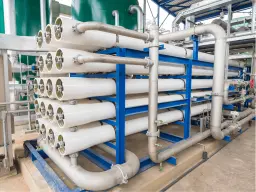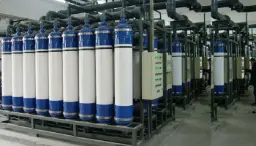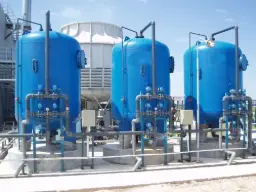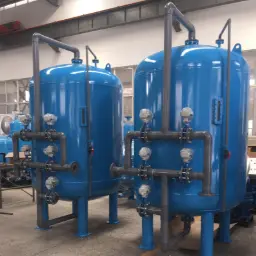Heavy Metal Removal for Mining and Metallurgy Industry
Heavy metal removal stands at the heart of responsible water management in modern mining and metallurgy complexes. Mine dewatering streams, concentrator overflows, smelter wash-downs, and acid mine drainage frequently contain elevated levels of copper, zinc, lead, cadmium, arsenic, nickel, chromium, and manganese. Left untreated, these effluents threaten aquatic ecosystems, breach strict discharge permits, and jeopardise downstream water reuse strategies that many operations now rely on to curb freshwater intake. Heavy metal removal therefore asks a single, pivotal question: how can an operator selectively capture dissolved and particulate metals at industrial flow rates while minimising sludge volume, reagent consumption, and life-cycle cost?
Answering that question requires an appreciation of both hydrometallurgical chemistry and the ever-evolving regulatory context. Engineers must reconcile variable influent chemistry, rapid load swings caused by storm events, and the tight footprint constraints typical of brown-field expansion projects. They must also factor in circular-economy drivers that encourage internal recycling of recovered metals and the valorisation of process solids as by-products rather than waste. Consequently, heavy metal removal is no longer just a compliance chore, it is a strategic enabler that unlocks water reuse, reduces make-up water draw, and improves a site’s Scope 1-3 emissions profile. Within the mining and metallurgy value chain, it touches everything from ore preparation to tailings management, providing a safeguard that keeps valuable metals inside the fence and harmful species out of the watershed.
Water Treatment Systems Used for Heavy Metal Removing
The sheer complexity of mine effluent necessitates a toolbox rather than a single silver-bullet technology. A well-designed flowsheet usually begins with influent equalisation to dampen hydraulic and chemical shocks, followed by staged physico-chemical and sometimes biological steps that each target specific species or particle size fractions. Operators increasingly layer digital twins and advanced process control onto these hardware blocks to see real-time speciation trends and adjust dosing on the fly. Sustainability goals push designers to favour low-energy options, recycle reagents where feasible, and capture metal-laden sludge for smelter feed or external sale. Scalability, modularity, and ease of winterisation are further selection criteria because mines often operate in remote, harsh climates where skilled labour is scarce and turn-down ratios of 10:1 are routine during ramp-up or care-and-maintenance periods.

Reverse Osmosis
Uses semipermeable membranes to remove dissolved impurities, ensuring high-purity water for boiler feed.

Nanofiltration
Tight pore-sized spiral-wounds reject divalent metals and sulphate while allowing monovalent ions to pass, achieving high water recovery at moderate trans-membrane pressures.

Water Softener
Exchanges calcium and magnesium with sodium, significantly reducing scale buildup in boilers.

Deionization
Specialised iminodiacetic or phosphonic resins adsorb trace nickel, cadmium, and lead down to low µg/L levels, regenerating with acid or caustic for multiple cycles of reuse.
Together these systems form a layered defence that tackles high-load metals, trace contaminants of concern, and emerging parameters such as selenium in one integrated train. Their complementary mechanisms offer redundancy, permit optimisation, and allow operators to juggle capex and opex against evolving permit limits and commodity prices.
Key Water-Quality Parameters Monitored
Precise monitoring anchors the success of any heavy metal removal programme. Mining influent rarely remains static; blasting campaigns, ore mineralogy shifts, and tailings reclaim flows can swing pH from 3 to 9 and metal concentrations over three orders of magnitude in a single day. By maintaining a robust online analytics suite, plant personnel can detect excursions early, tweak reagent set-points, and comply with daily maximum loading limits rather than merely monthly averages. Sensor density has grown in recent years as rugged, low-maintenance probes for oxidation-reduction potential (ORP), dissolved oxygen, and turbidity have proven their worth in remote environments. Meanwhile, portable X-ray fluorescence (pXRF) and inductively coupled plasma (ICP) labs provide rapid confirmation of metal speciation during pilot campaigns, enabling data-driven selection of the most selective resins or extractants.
Digitisation layers one further advantage: predictive maintenance. By feeding continuous water-quality data into machine-learning models, operators anticipate scaling on membranes, forecast lime silo consumption, and schedule resin change-outs just before breakthrough occurs. Such insights directly cut costs and avert permit breaches. Importantly, real-time dashboards also satisfy the transparency expectations of investors and host communities, demonstrating environmental stewardship through evidence rather than promises.
| Parameter | Typical Range (Raw Mine Water) | Control Method |
|---|---|---|
| pH | 2.5 – 5.0 (acid mine drainage), 6.5 – 8.0 (neutral drainage) | Lime or caustic dosing, CO₂ stripping |
| Total Copper (mg L⁻¹) | 10 – 1 500 | Lime precipitation, SX-EW polishing |
| Total Zinc (mg L⁻¹) | 5 – 800 | HDS circuit, ion exchange resin |
| Lead + Cadmium (µg L⁻¹) | 100 – 5 000 | High-sulphide precipitation, chelating resin |
| Arsenic (mg L⁻¹) | 0.05 – 50 | Ferric coagulation followed by filtration |
| Chromium (mg L⁻¹) | 0.1 – 10 (as Cr ⁶⁺) | Reduction with ferrous iron, pH adjustment |
| Sulphate (mg L⁻¹) | 1 000 – 8 000 | Nanofiltration, SRBR conversion |
| Temperature (°C) | 5 – 35 | Heat tracing, adaptive dose control |
| Suspended Solids (mg L⁻¹) | 50 – 2 000 | Hydrocyclones, lamella clarifiers |
| Flow Variability (Q:Qavg) | 0.1 – 3.0 | Equalisation basins, VFD pump control |
Design & Implementation Considerations
Designing a heavy metal removal plant for a mining complex demands more than simply selecting unit operations from a catalogue. Engineers must first map the hydrogeochemical sources of contamination: pit inflows differ markedly from concentrator effluent, and tailings seepage presents another unique profile dominated by fines and residual reagents. Comprehensive characterisation shapes decisions on whether to build a centralised facility or disperse several skid-mounted packages near individual sources. Land availability frequently dictates high-rate clarification technologies that shave residence time to minutes, but designers must then allocate space for sludge thickening and dewatering. Trade-offs continue with reagent choice; high-calcium lime is abundant and inexpensive yet raises sludge mass, whereas magnesium hydroxide lowers solids yield but demands heated slurry make-up in cold regions.
Sustainability overlays fresh challenges. Scope 1 emissions accounting now captures carbon released from limestone calcination and diesel haulage of bulk chemicals, pushing some operators towards on-site lime kilns fired by waste heat or renewable energy. Where power is at a premium, low-pressure membrane systems and gravity-driven bioreactors gain favour. The digital thread cannot be ignored: supervisory control and data acquisition (SCADA) screens, historian databases, and cyber-secure cloud links must be integrated from day one, not bolted on later. This connectivity enables performance-based contracts where equipment vendors guarantee metal removal efficiency per kilowatt-hour consumed, aligning incentives with long-term plant uptime.
Operation & Maintenance
Day-to-day operation revolves around balancing chemical dose, sludge management, and analytical verification. Lime slakers need vigilant grit removal and constant water-to-lime ratio control to avoid scaling downstream pipes. In solvent extraction circuits, phase separation between organic and aqueous streams determines copper mass transfer; crud blankets must be skimmed regularly to maintain interface clarity. Membrane skids rely on automated back-wash sequences triggered by trans-membrane pressure rise, while anti-scalant injection and periodic citric-acid cleans extend element life. Operators also track resin exhaustion kinetics using breakthrough curves derived from online trace-metal analysers, triggering nitric or hydrochloric regeneration cycles before effluent exceeds micro-permit limits.
Maintenance teams schedule electrode refurbishment in electrocoagulation units, inspect mixer gearbox lubrication, and calibrate pH probes with certified buffers. Remote mines often utilise augmented-reality headsets that link technicians to OEM experts off-site, accelerating troubleshooting and reducing fly-in-fly-out costs. Data from all these activities feed enterprise asset-management platforms, generating key performance indicators such as mean time between failures and cost per cubic metre treated. Continuous improvement efforts then target the worst performers, optimising chemical blends, experimenting with flocculant charge density, or trialling new hollow-fibre ultrafiltration modules as polishing barriers upstream of nanofiltration.
Challenges & Solutions
Environmental, technical, and socio-economic factors converge to complicate heavy metal removal in the mining and metallurgy sphere. One persistent hurdle is the coexistence of acid mine drainage with saline groundwater ingress, producing high total dissolved solids that hamper lime neutralisation efficiency and drive osmotic pressure in membrane cells. Engineers overcome this by staging neutralisation prior to nanofiltration, thereby reducing scaling risk and enabling partial blend-back of permeate for reagent preparation. Seasonal freeze-thaw cycles present another challenge, thickening sludge and slowing biological kinetics in passive reactors; insulated tanks, heat-traced piping, and hybrid heaters powered by waste-heat boilers keep processes within design temperature bands.
Community scrutiny continues to rise, with stakeholders challenging sites to demonstrate transparency in water stewardship. Operators respond by publishing live dashboards of effluent quality, hosting independent audits, and adopting real-time toxicity assays that detect synergistic effects missed by standard metal tests. Tailings facility failures elsewhere in the industry reinforce the imperative to limit water inventory; as a result, high-density thickened tailings and paste backfill circuits recycle treated water internally, leaving the heavy metal plant to polish only a bleed stream. Finally, fluctuating metal prices influence the payback period on recovery technologies such as SX-EW; flexible contractual clauses allow plants to mothball or intensify metal recovery loops as market conditions warrant, ensuring economic resilience.
Advantages & Disadvantages
A well-executed heavy metal removal strategy delivers benefits far beyond regulatory compliance. By stripping metals to microgram levels, mines unlock high-quality process water suitable for flotation makeup, dust suppression, and even boiler feed, slashing freshwater withdrawal fees and mitigating drought risk. When precipitated sludge is routed to a smelter, valuable metal units re-enter the revenue chain, improving resource efficiency. Digitally enhanced control loops drive reagent savings, lowering both cost and greenhouse-gas intensity. Moreover, visible commitment to water stewardship enhances social licence to operate, smoothing the path for future expansion permits.
Yet challenges persist. Lime consumption represents a significant operating expense and can inflate the carbon footprint unless offset with renewable power or process improvements. Resin, membrane, and solvent systems demand specialised maintenance skills that may be scarce in remote regions, potentially raising labour costs or downtime. Sludge management, while improved by modern thickeners, still requires energy for pumping and filtration, and disposal routes may be limited if elements like arsenic classify the waste as hazardous. Capital expenditures for membrane skids and SX-EW cells can be steep, particularly when designed for worst-case hydraulic loads that occur only a few weeks per year.
| Advantage | Disadvantage |
|---|---|
| Enables high-level water reuse and reduces freshwater intake | Lime and reagent consumption increase opex and carbon footprint |
| Recovers saleable metals, turning waste into revenue | Complex flowsheets raise capex and technical skill requirements |
| Enhances compliance with stringent discharge permits | Sludge disposal can be costly if classified as hazardous |
| Strengthens social licence through visible environmental stewardship | Remote sites face logistics challenges for chemical and spare parts |
| Data-driven control lowers overall reagent and energy usage | Membrane fouling or resin exhaustion can cause unplanned outages |
Frequently Asked Questions
Mining companies, regulators, and local communities often raise recurring questions about heavy metal removal. Understanding these concerns helps plant designers craft educational outreach and tailor training programmes that ensure smooth commissioning and operation. It also aids procurement teams as they compare vendor proposals, evaluate pilot data, and negotiate performance guarantees. The following FAQ compiles the most common queries heard during feasibility studies, front-end engineering, and routine audits, providing concise yet technically rigorous answers that bridge the gap between boardroom expectations and field realities.
-
What dictates the choice between lime precipitation and electrocoagulation?
Lime is economical for bulk metals and acidity neutralisation, whereas electrocoagulation excels at treating complexed or colloidal metals with lower sludge yield; hybridising both can capture the advantages of each. -
Can nanofiltration permeate be used directly in mineral processing circuits?
Yes, provided monovalent ion levels meet process specifications; blending with raw water can adjust conductivity and hardness to desired thresholds. -
How is arsenic-laden sludge managed safely?
Stabilisation with ferric and cementitious additives reduces leachability, and encapsulated filter cake is disposed of in engineered landfills or returned to underground stopes. -
What is the typical payback period for an SX-EW polishing loop?
Payback ranges from one to four years, depending on copper price, influent grade, and power costs; inclusion of cathode sales in financial models is key. -
Does biological treatment work in cold climates?
Yes, if reactors are insulated and designed with sufficient residence time; some sites co-locate passive cells underground where geothermal heat moderates temperature swings. -
How is process control maintained during storm events?
Equalisation basins and model-predictive control strategies buffer hydraulic surges, while on-line metal analysers adjust chemical dosages within seconds. -
Are rare earth elements captured by conventional lime circuits?
Most light REEs partially precipitate at high pH, but selective ion exchange resins or solvent extraction stages optimise recovery if economic incentives exist. -
How often are membranes replaced in mine water service?
With proper pre-treatment and periodic cleaning, spiral-wounds can last three to five years; condition-based monitoring via pressure decay tests guides timely replacement. -
What role does artificial intelligence play in today’s plants?
AI algorithms predict scaling indices, recommend dose set-points, and flag anomalies, assisting operators in maintaining stable effluent despite variable influent chemistry. -
Can reclaimed metals offset total treatment costs?
Recovered copper, zinc, or nickel can generate revenue streams that offset 10-40 % of annual operating expense, depending on market prices and recovery efficiency.